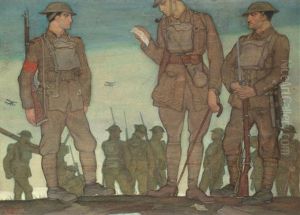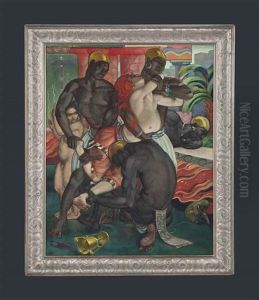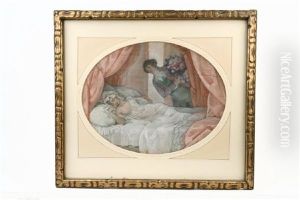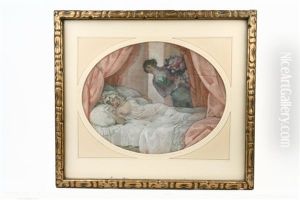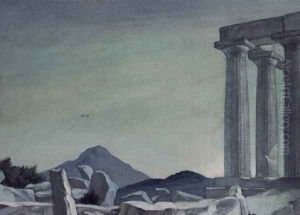Vera Willoughby Paintings
Vera Willoughby, born in Hungary as Vera Paintek, was an artist whose work spanned a variety of mediums including watercolor, illustration, and design. She became most prominently known for her delicate watercolor illustrations that often depicted fashionable women and scenes from high society. Willoughby's illustrations were marked by a distinctive style that combined a soft palette with a keen observation of detail and a sense of whimsy.
In the early part of her career, Willoughby was associated with the burgeoning art scenes in Europe, particularly in Paris and London. She moved to England in the early 1900s, where she became further involved in the arts community. Her work was exhibited in various galleries, and she gained recognition for her contributions to published works. Notably, she illustrated luxurious limited editions of books, such as Jane Austen's 'Mansfield Park' and 'Pride and Prejudice,' which were published by George G. Harrap & Co. in the 1930s. These editions are particularly sought after by collectors for their exquisite artwork.
Vera Willoughby's life was not only marked by her artistic achievements but also by her personal journey. She married twice, first to a Hungarian nobleman and then to a British officer, Major Herbert Willoughby. This second marriage led her to adopt the name by which she is commonly known. Throughout her life, she navigated the challenges of being a woman in the early 20th century art world, carving out a space for herself and her unique vision.
Despite facing the difficulties of World War I and the interwar period, Willoughby continued to work and contribute to the art world up until her death in 1939. Her legacy lives on through her illustrations, which continue to be appreciated for their elegance, charm, and the glimpse they offer into the fashions and sensibilities of her time.
